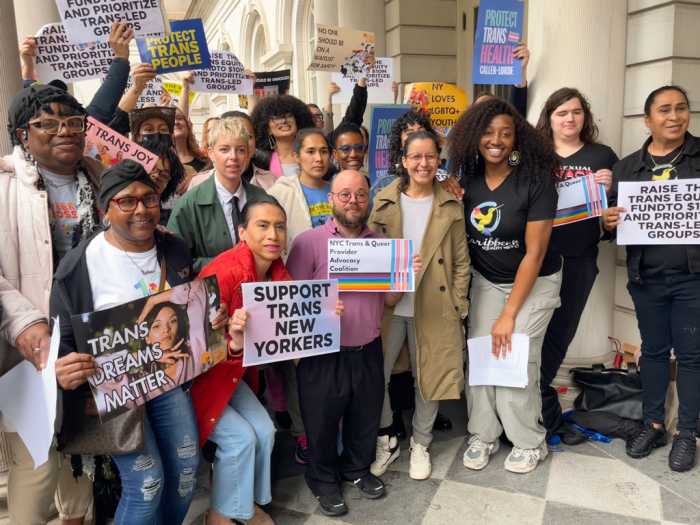Elected officials and public housing residents chanting “Tear down the buildings” competed with the harried voices of local preservationists last week in the latest round over the 10 dilapidated mansions known as Admiral’s Row.
The verbal and flier handout scuffle took place at the steps of Borough Hall before the National Guard Bureau's latest meeting to decide the fate of the mansions along Flushing Avenue, built between 1858 and 1901.
The mansions once housed naval officers and their families who worked in the Brooklyn Navy Yard, and thus, the property remains under federal jurisdiction.
The city wants to buy the properties, raze the mansions and turn it over to the Brooklyn Navy Yard Development Corporation (BNYDC) to build and manage a 60,000-square-foot supermarket on the site.
The BNYDC has committed to also doing public outreach through an employment center to fill many of the 500 expected jobs the project will create.
This plan enjoys the strong support from all the local elected officials, Borough President Marty Markowitz and particularly residents of the nearby Farragut, Ingersoll and Walt Whitman public housing complexes.
“This community is in desperate need of jobs and access to fresh produce,” said Debra Stewart, president of the Farragut Houses Tenants Association.
“For too long these buildings on Admiral's Row have been neglected, and now they serve no purpose to our community. They need to come down. I encourage the federal government to transfer the property to the Brooklyn Navy Yard so we can have our supermarket.”
But preservationists contend that the issue is not an either/or situation and that both mansion preservation and construction of the much-needed supermarket can occur on the 6-acre property.
Fort Greene Association spokesperson Paul Palazzo noted that Pratt Institute Professor Brent Porter, after a year of research, developed an alternate plan that adaptively reuses the houses and incorporates a supermarket and other needed services for the community.
“The [Pratt] plan capitalizes on current and future transportation alternatives including a waterway access and does not place an additional air quality burden on the neighborhood residents,” said Palazzo.
“This kind of approach is a win-win for Brooklyn. Let’s have our cake and eat it too.”
But City Council member Letitia James noted that while in the past she has stood shoulder-to-shoulder with local preservationists, she couldn’t join them on this issue.
“Unfortunately, all the knowledgeable parties that I have spoken with concur that it would be prohibitively expensive to save the Admiral’s Row Houses,” said James.
“Redevelopment of this site is the most prudent path to take in a period of scarce public dollars,” she added.
Kristin Leahy, spokesperson for National Guard Bureau, said the Borough Hall meeting was the second of three meetings before the federal agency renders their decision on the fate of the property.
The meeting was firstly to solicit more public opinion on the matter and secondly, to release architectural evaluation of the mansions that was completed since the last meeting in December, she said.
Leahy said that evaluation concluded that eight of the 10 mansions are structurally sound, but it would take about $30 million to rehabilitate the mansions.
Under federal statutes, every agency has to try to understand the affects an action might have on historic property and this agency has to take into consideration the city’s plan to demolish the properties, she said.
“We are tasked by law to try to avoid, minimize or mitigate any negative impacts to historic property,” said Leahy.
“We need to understand if there is a way to avoid full demolition while still allowing the redevelopment of the site to occur,” she added.
Leahy said if it is determined that demolition is the only viable option, then other stipulations must occur such as photographing buildings prior to demolition, salvaging some materials or creating a commemorative plaque on the site.
The BNYDC has repeatedly said they do not want to spend money to renovate the mansions.
Leahy said the National Guard Bureau will meet with various community stakeholders in August, and hold their final public meeting sometime in the fall.
There is no definite time frame in which a final decision will be made, she said.





















